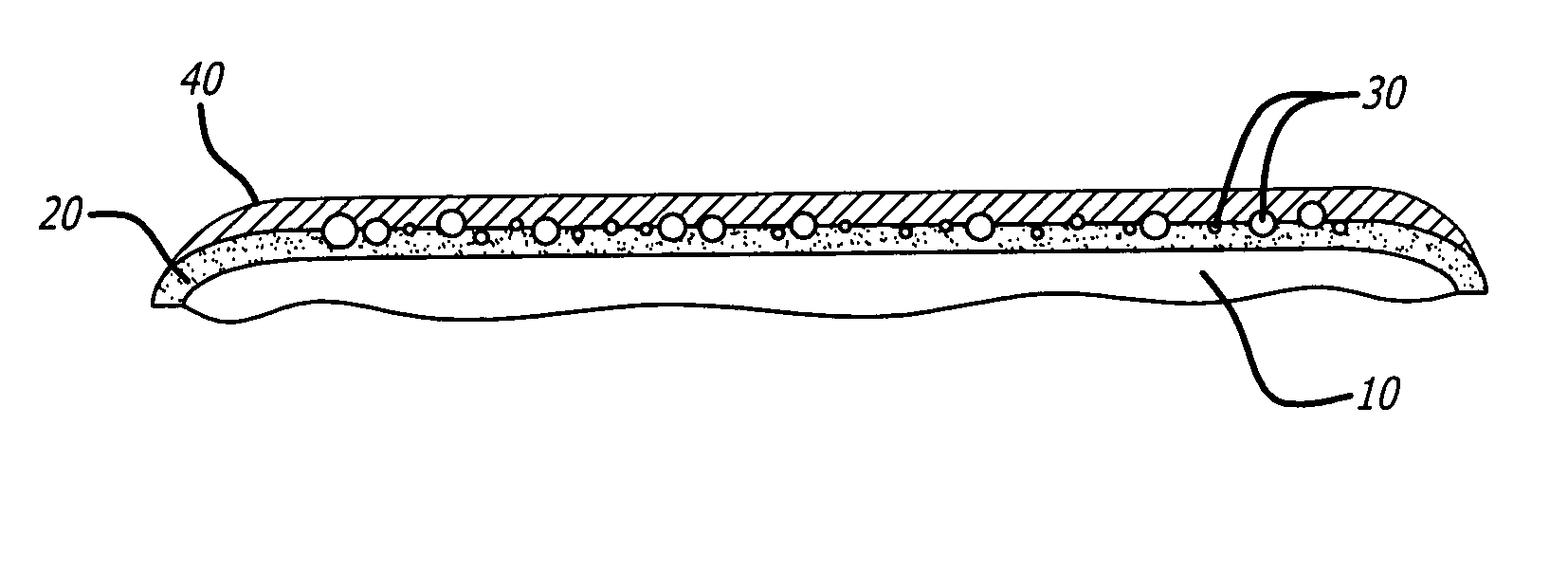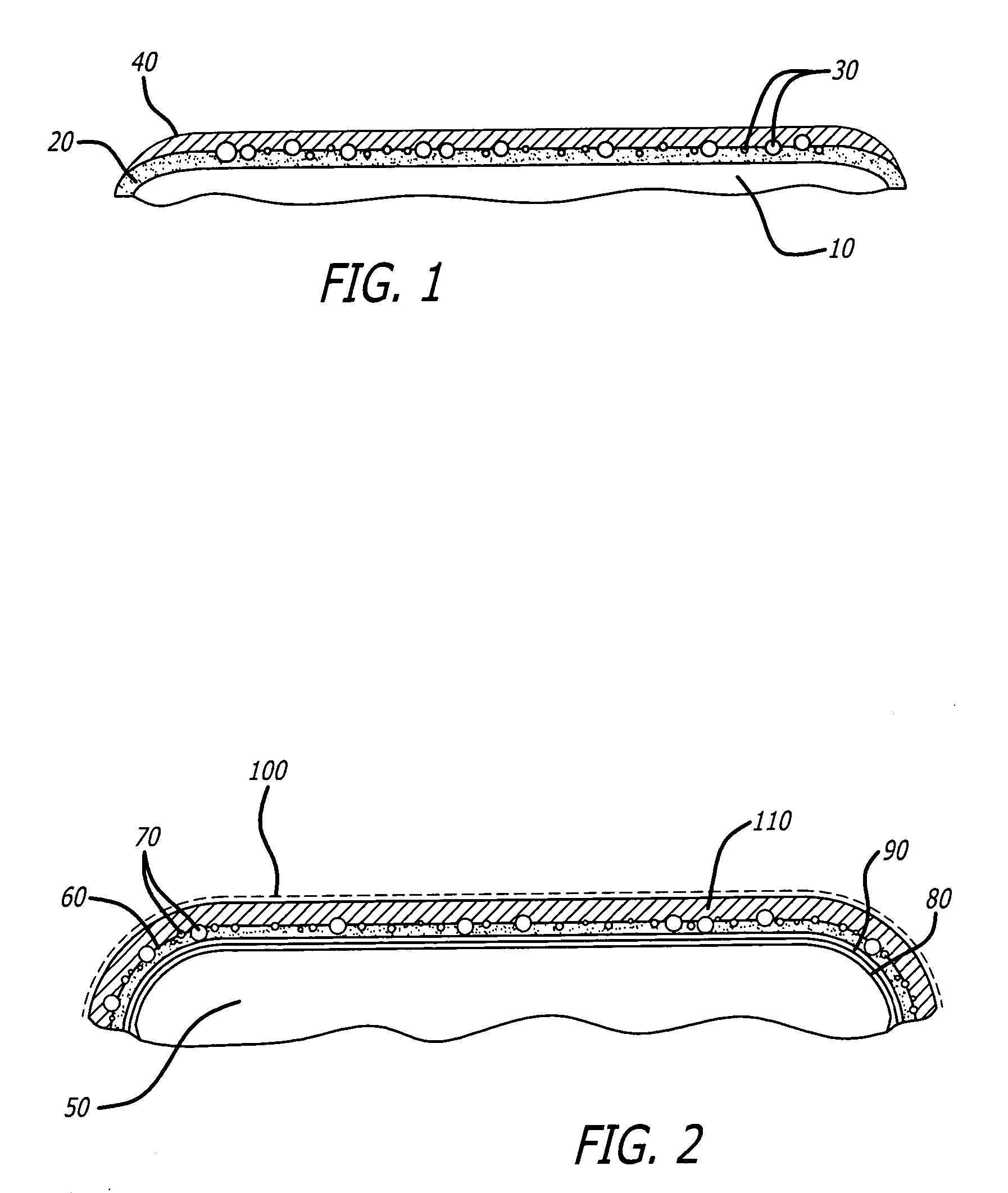Methods and devices for enhanced adhesion between metallic substrates and bioactive material-containing coatings
a technology of bioactive materials and metallic substrates, which is applied in the direction of electrophoresis, electrolysis, electrolysis, etc., can solve the problems of difficult adhesion of a polymeric coating to a substantially different substrate, such as the metallic substrate of a stent, and exceptionally undesirable separation in an implanted medical device, so as to reduce the risk of separation
- Summary
- Abstract
- Description
- Claims
- Application Information
AI Technical Summary
Benefits of technology
Problems solved by technology
Method used
Image
Examples
Embodiment Construction
I. Definitions
[0027] Some terms that are used herein are described as follows.
[0028] The term “bioactive material(s)” refers to any organic, inorganic, or living agent that is biologically active or relevant. For example, a bioactive material can be a protein, a polypeptide, a polysaccharide (e.g. heparin), an oligosaccharide, a mono- or disaccharide, an organic compound, an organometallic compound, or an inorganic compound. It can include a living or senescent cell, bacterium, virus, or part thereof. It can include a biologically active molecule such as a hormone, a growth factor, a growth factor, producing virus, a growth factor inhibitor, a growth factor receptor, an anti-inflammatory agent, an antimetabolite, an integrin blocker, or a complete or partial functional insense or antisense gene. It can also include a man-made particle or material, which carries a biologically relevant or active material. An example is a nanoparticle comprising a core with a drug and a coating on th...
PUM
| Property | Measurement | Unit |
|---|---|---|
| Adhesion strength | aaaaa | aaaaa |
| Bioactive | aaaaa | aaaaa |
Abstract
Description
Claims
Application Information
 Login to View More
Login to View More - R&D
- Intellectual Property
- Life Sciences
- Materials
- Tech Scout
- Unparalleled Data Quality
- Higher Quality Content
- 60% Fewer Hallucinations
Browse by: Latest US Patents, China's latest patents, Technical Efficacy Thesaurus, Application Domain, Technology Topic, Popular Technical Reports.
© 2025 PatSnap. All rights reserved.Legal|Privacy policy|Modern Slavery Act Transparency Statement|Sitemap|About US| Contact US: help@patsnap.com


